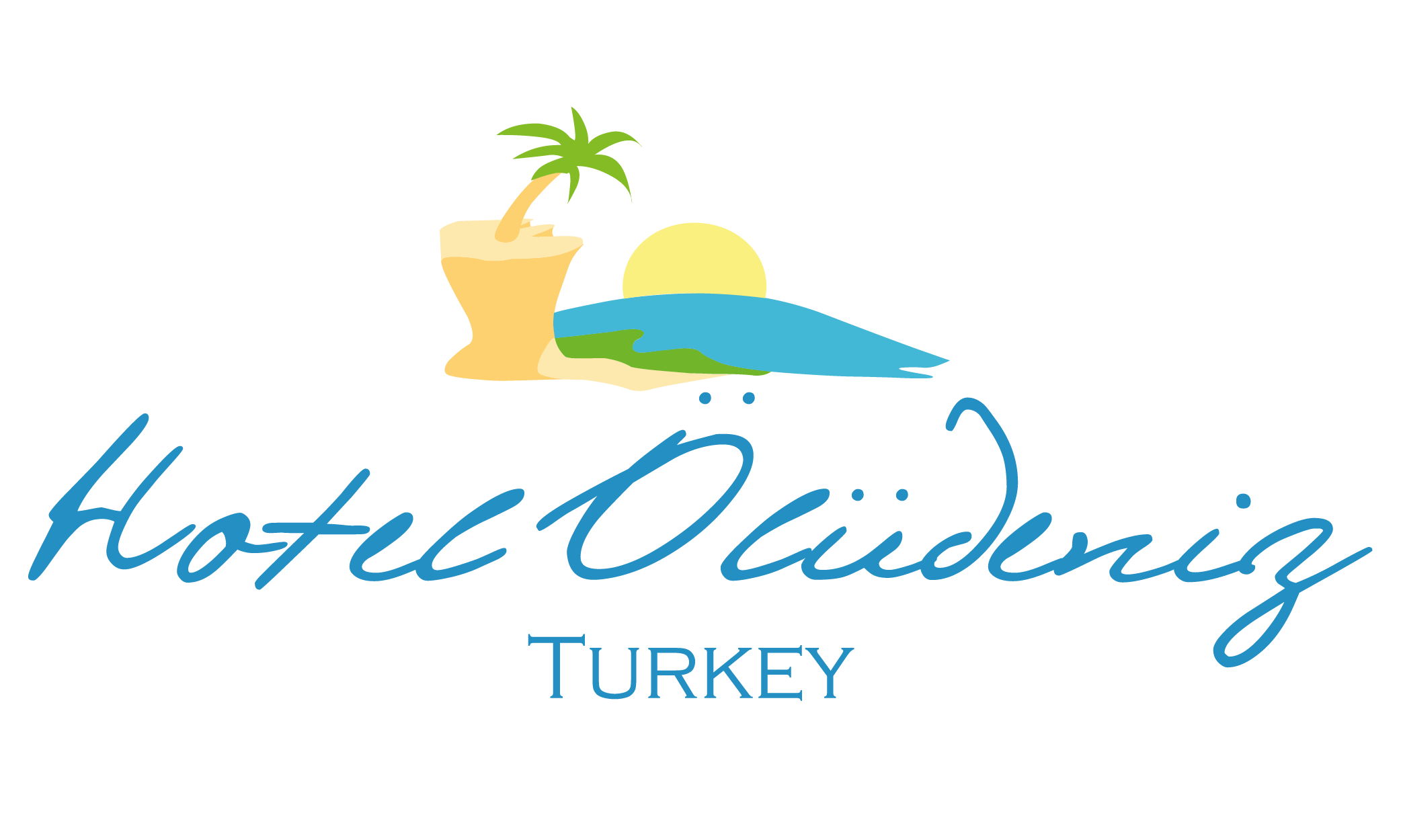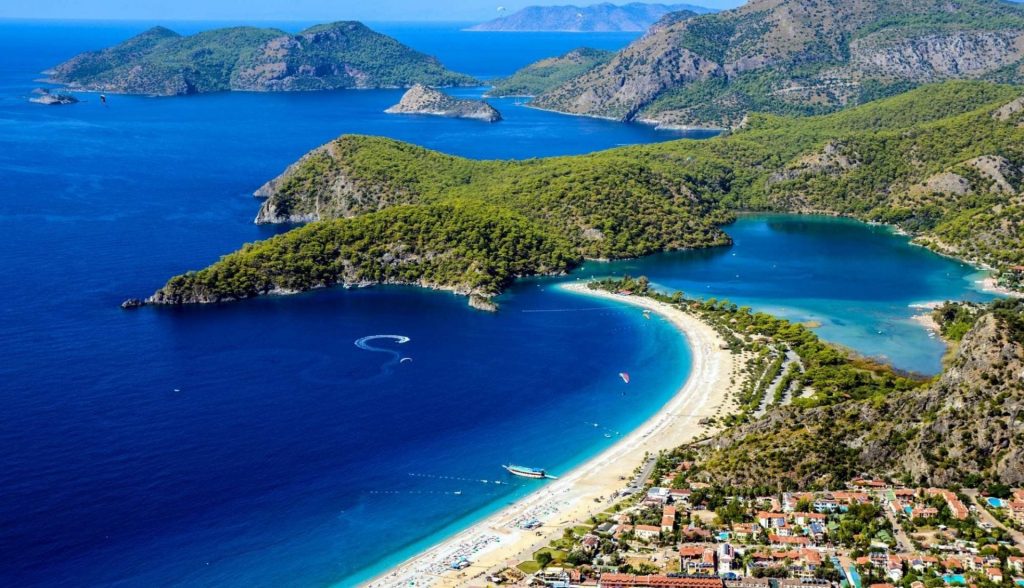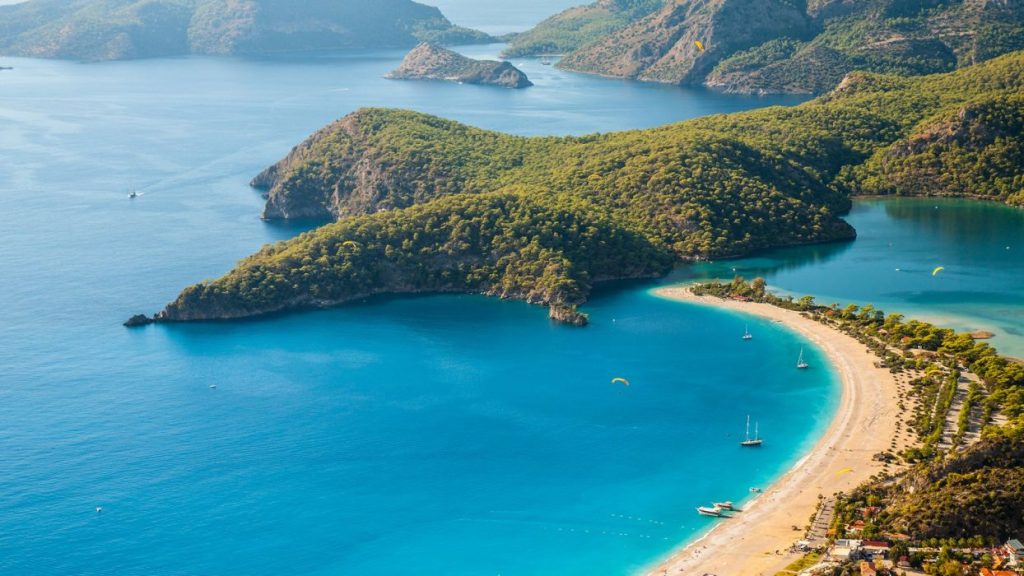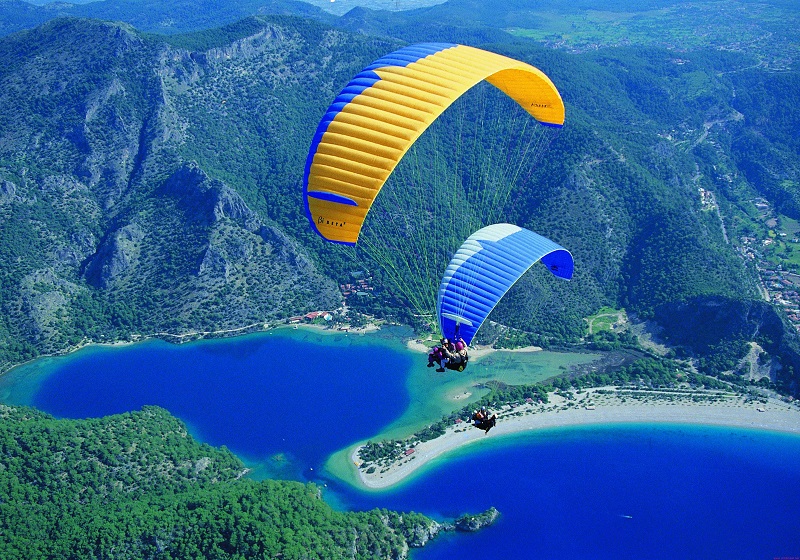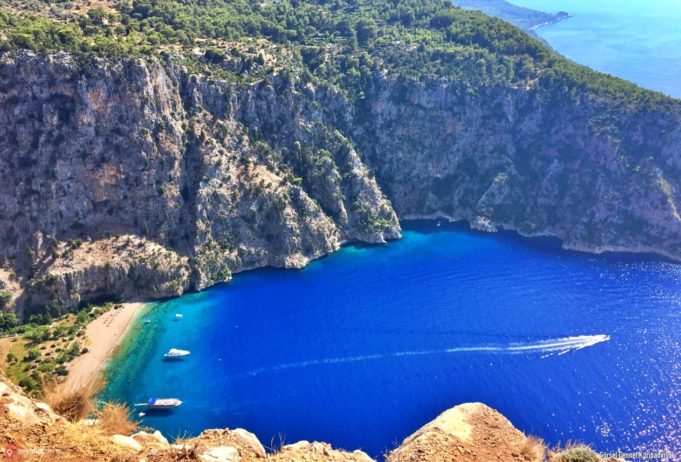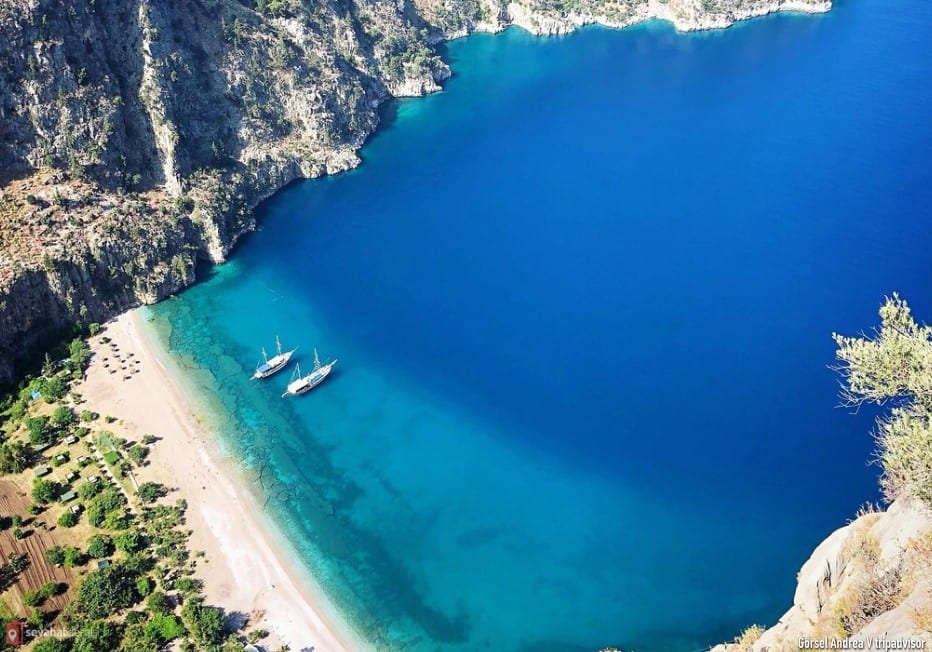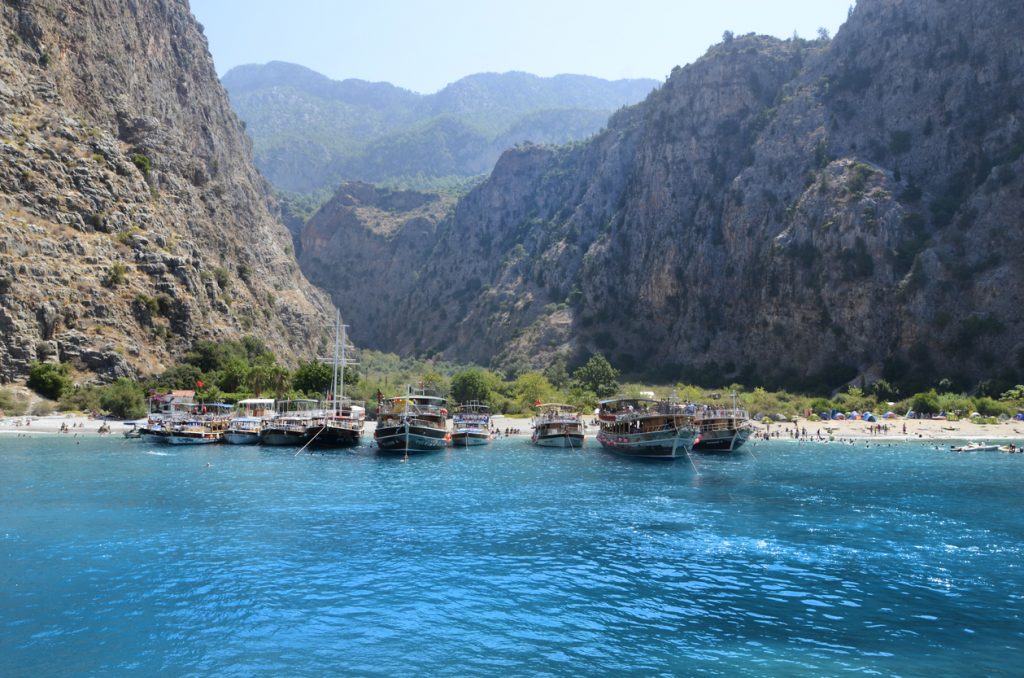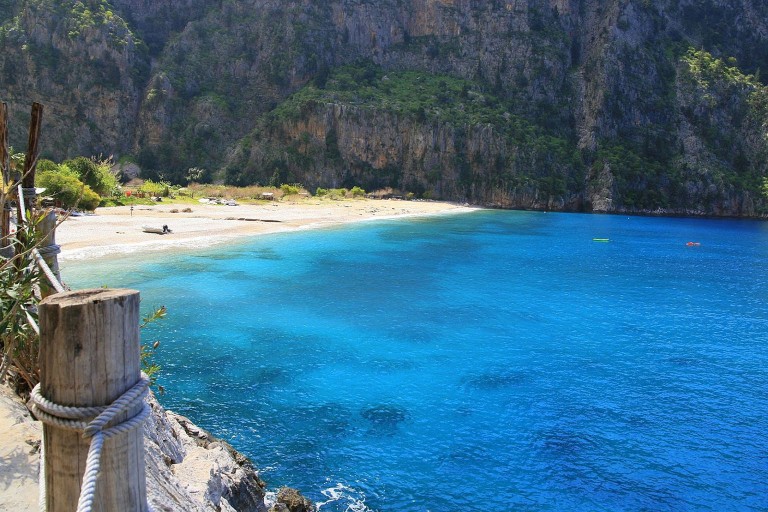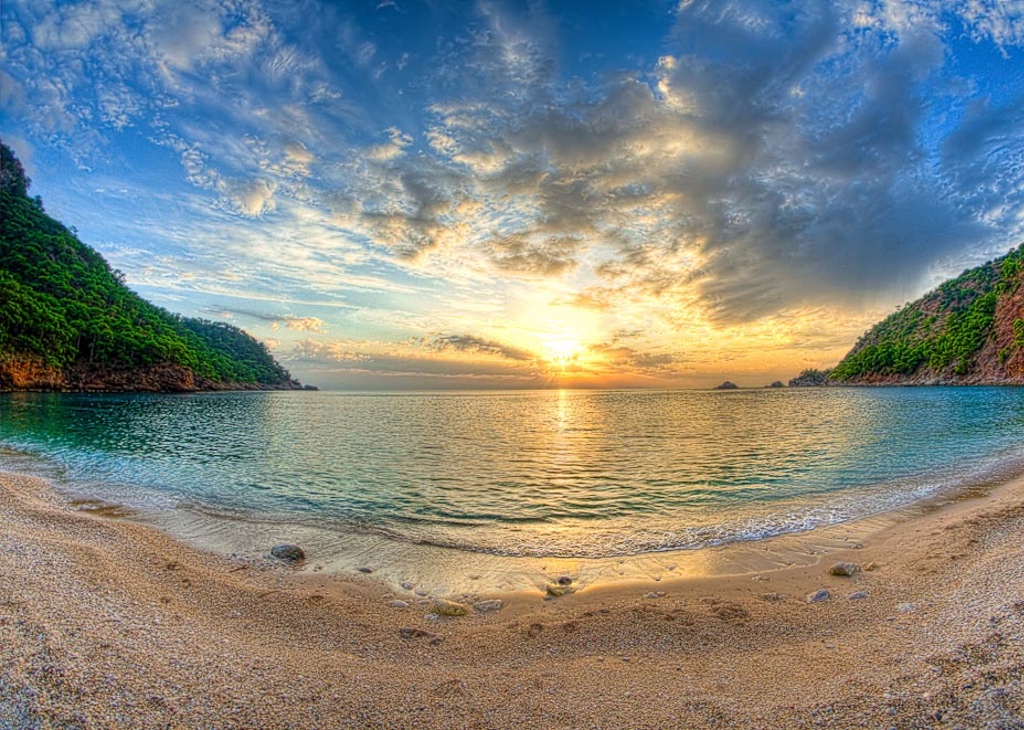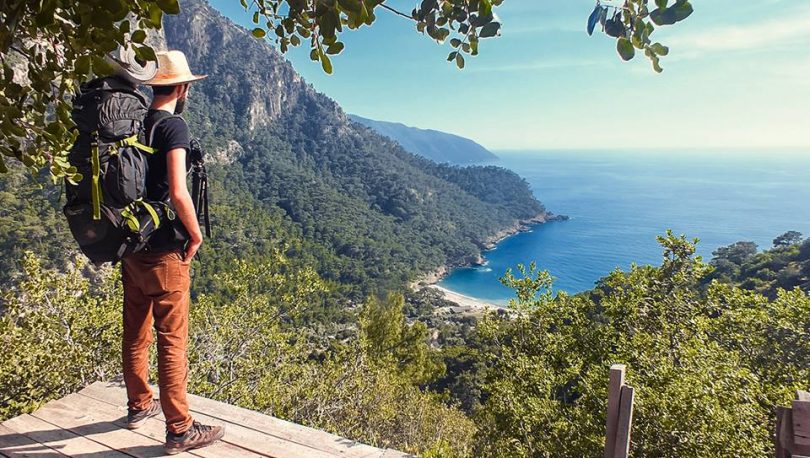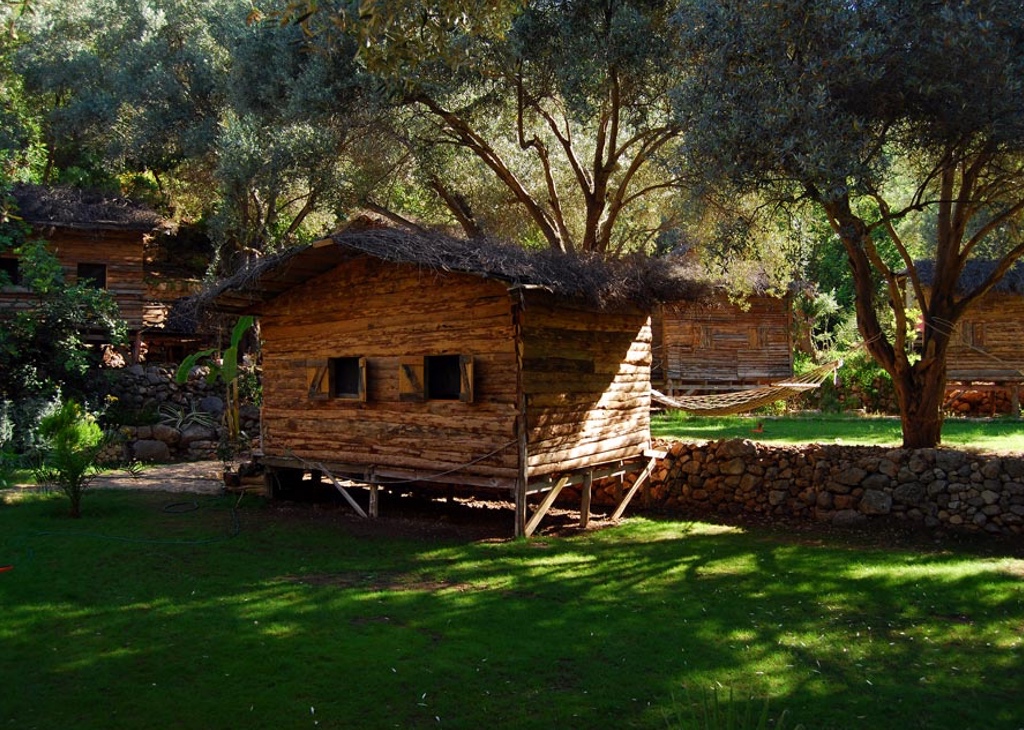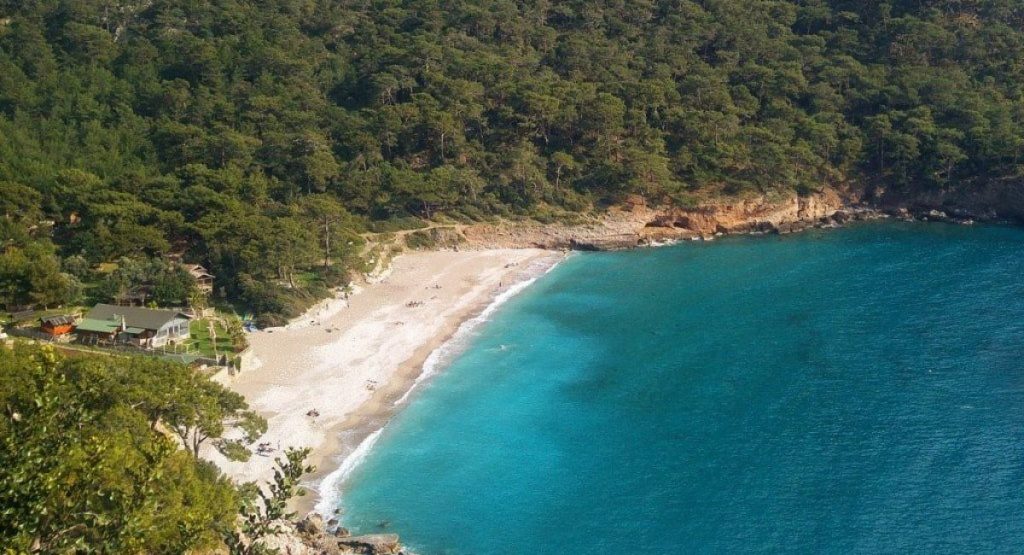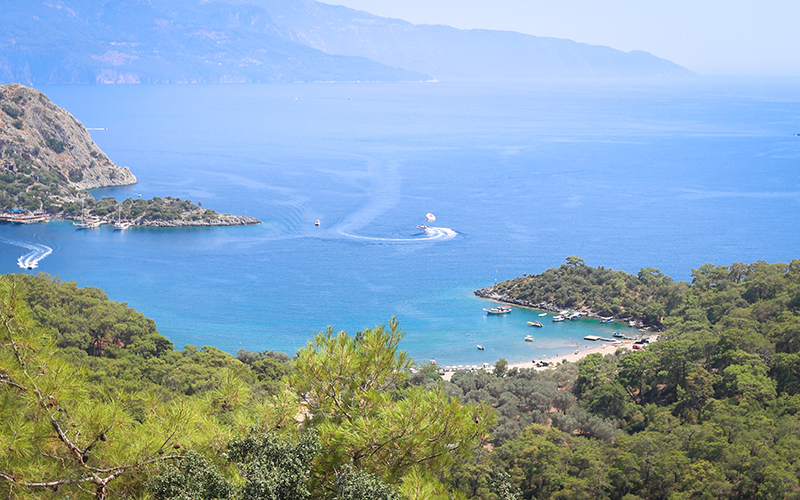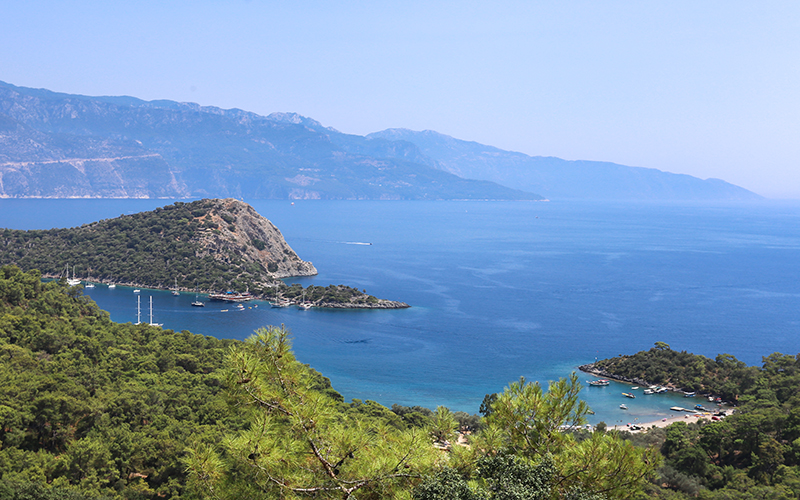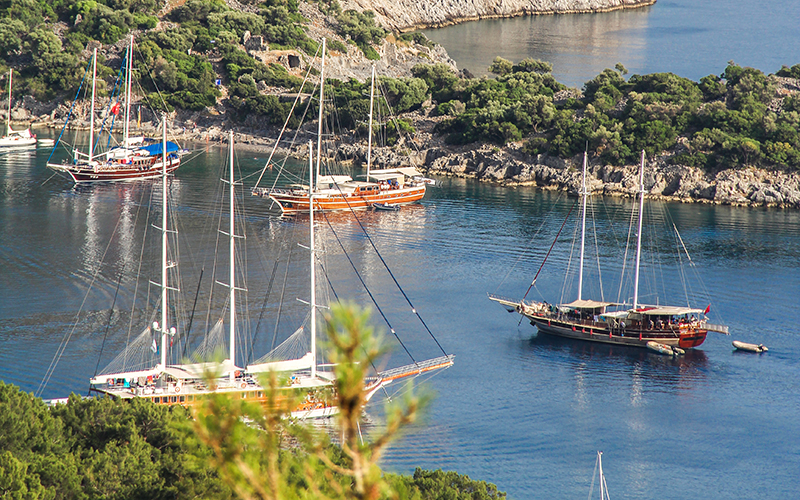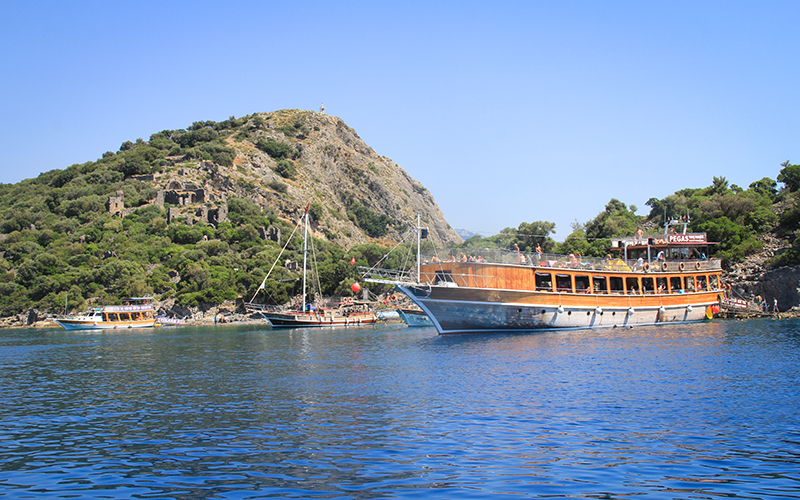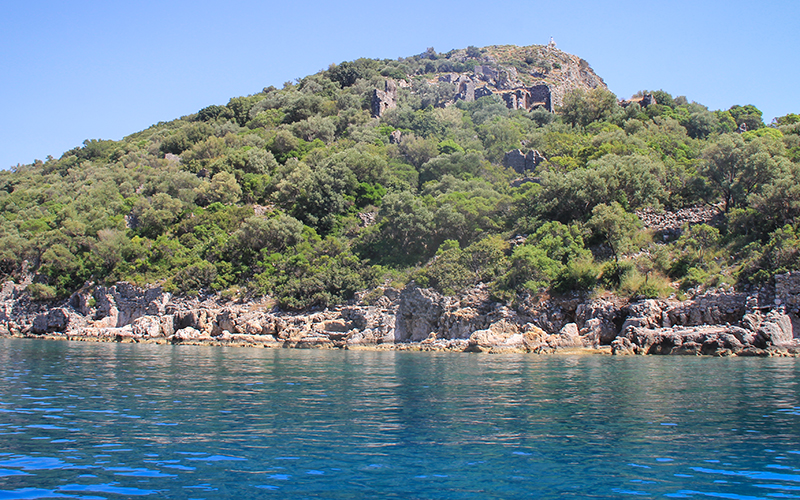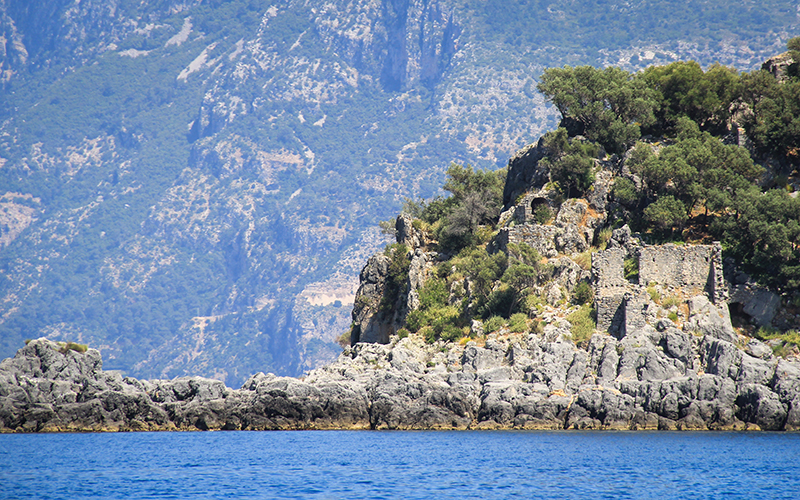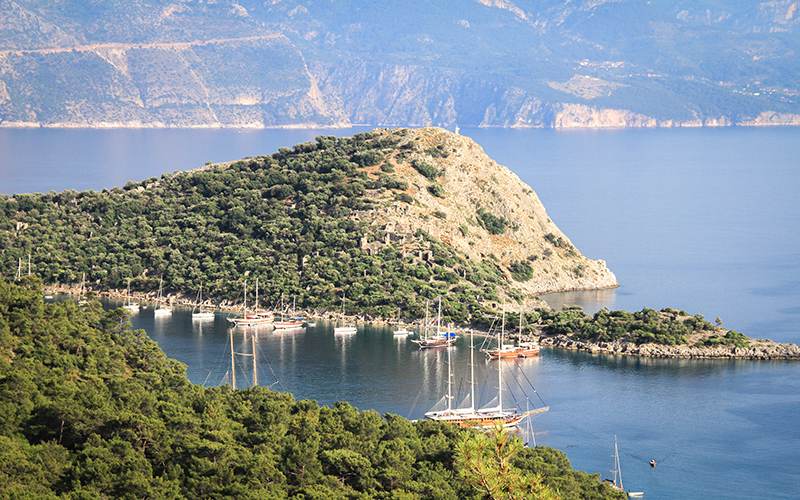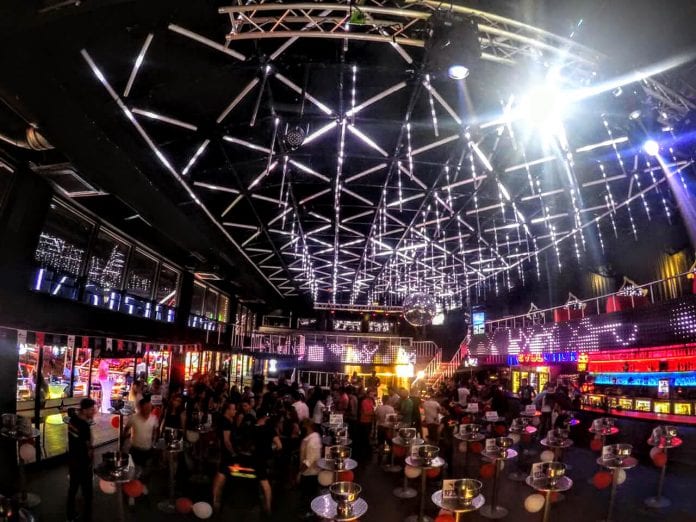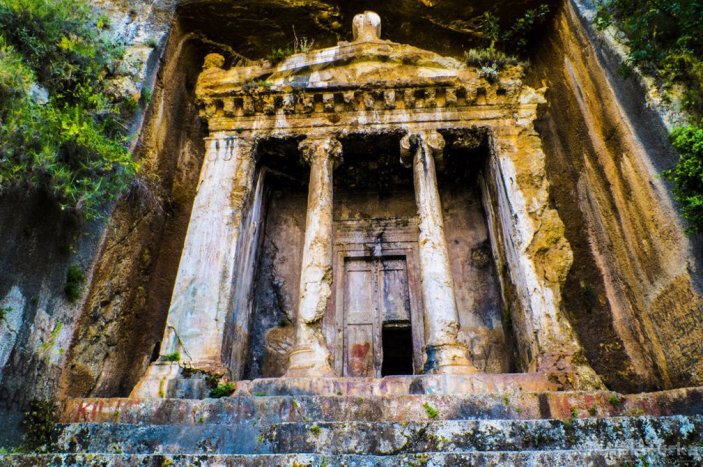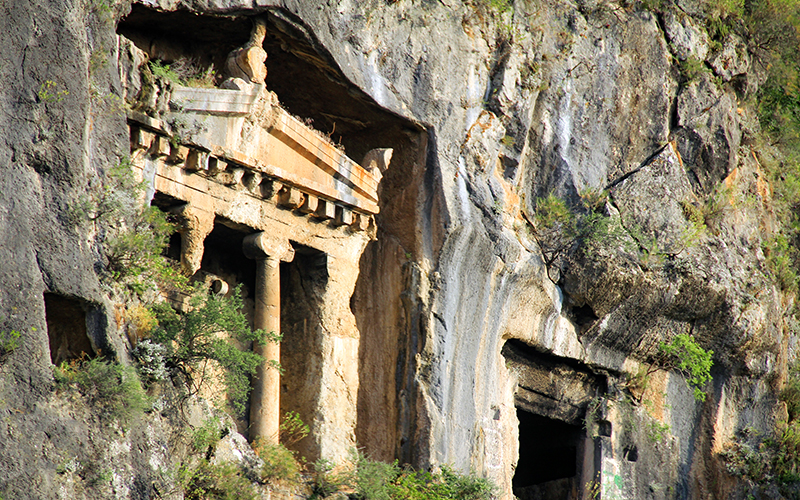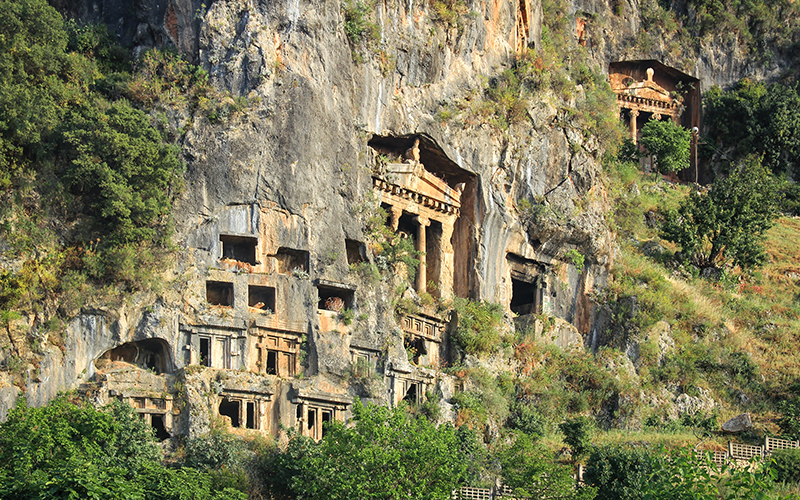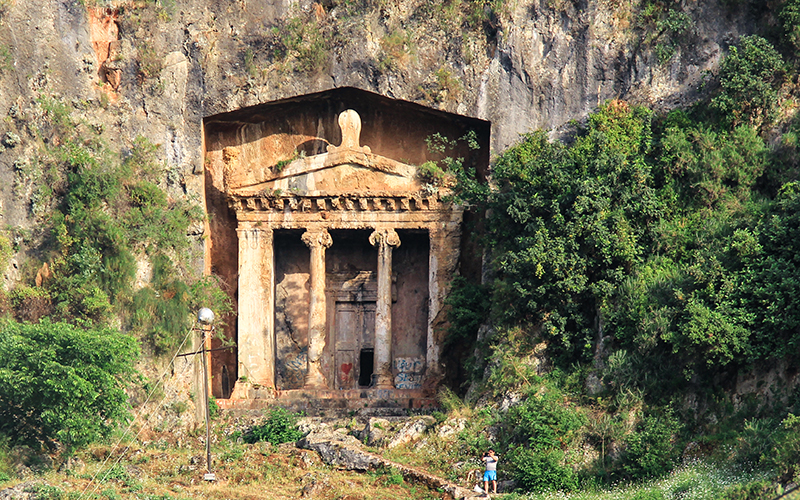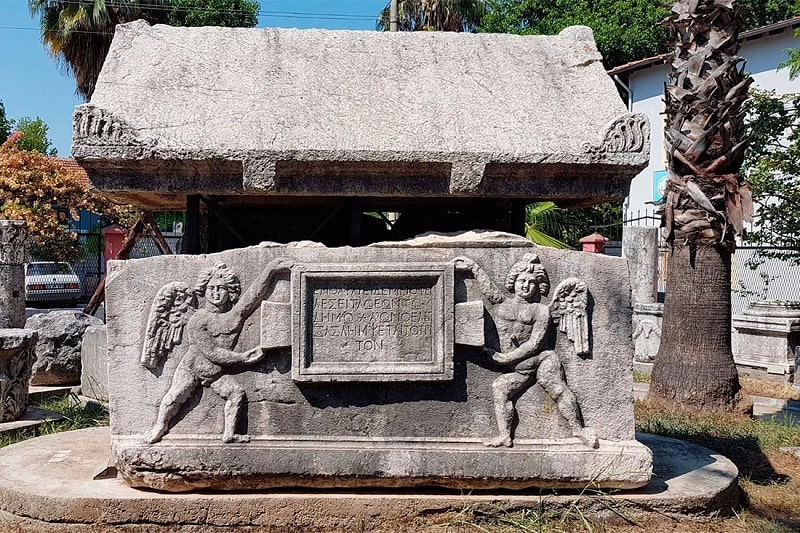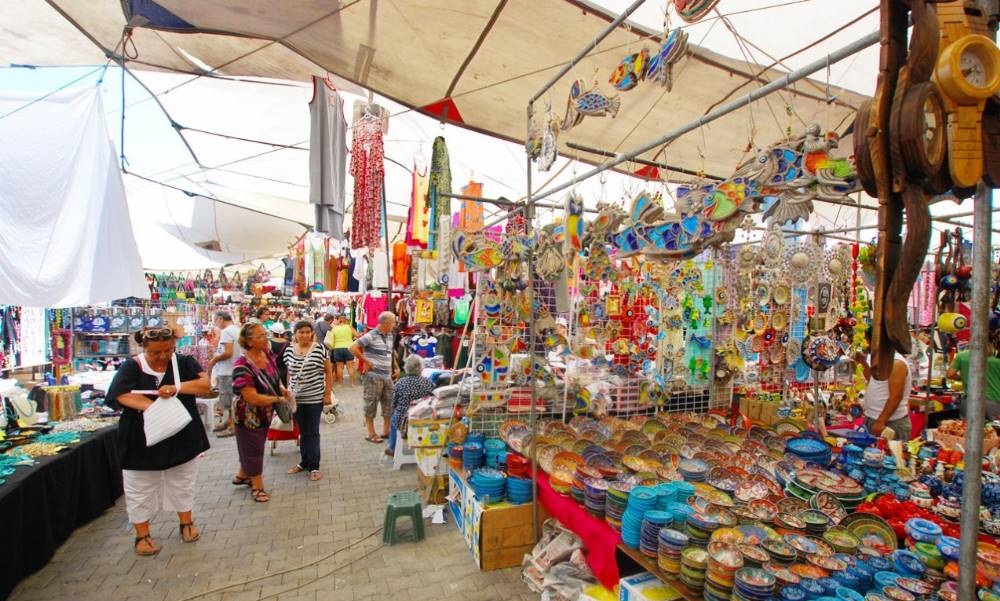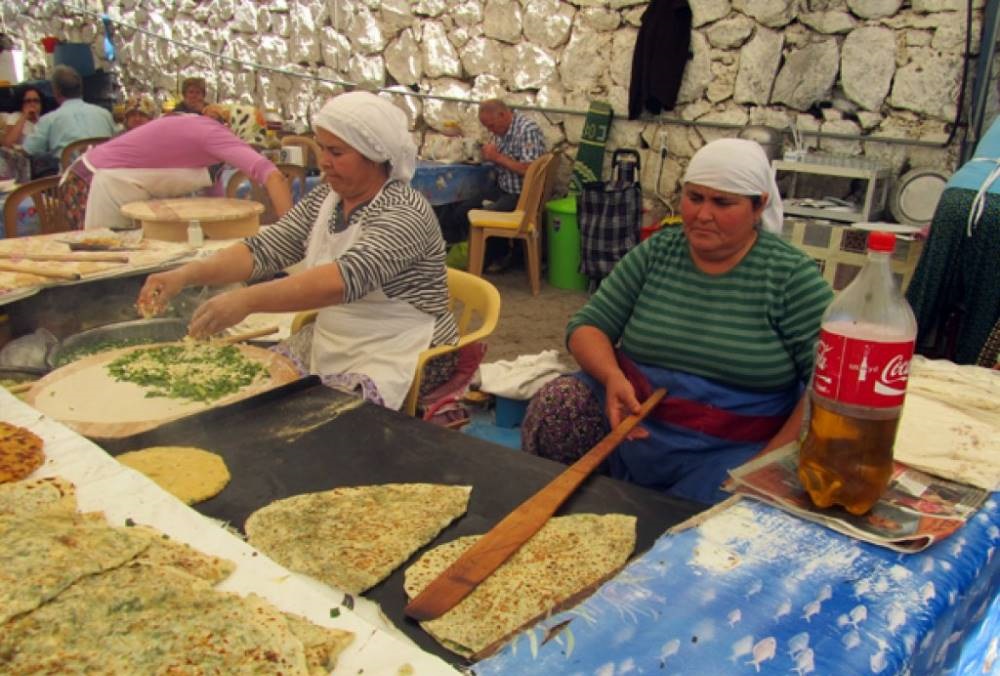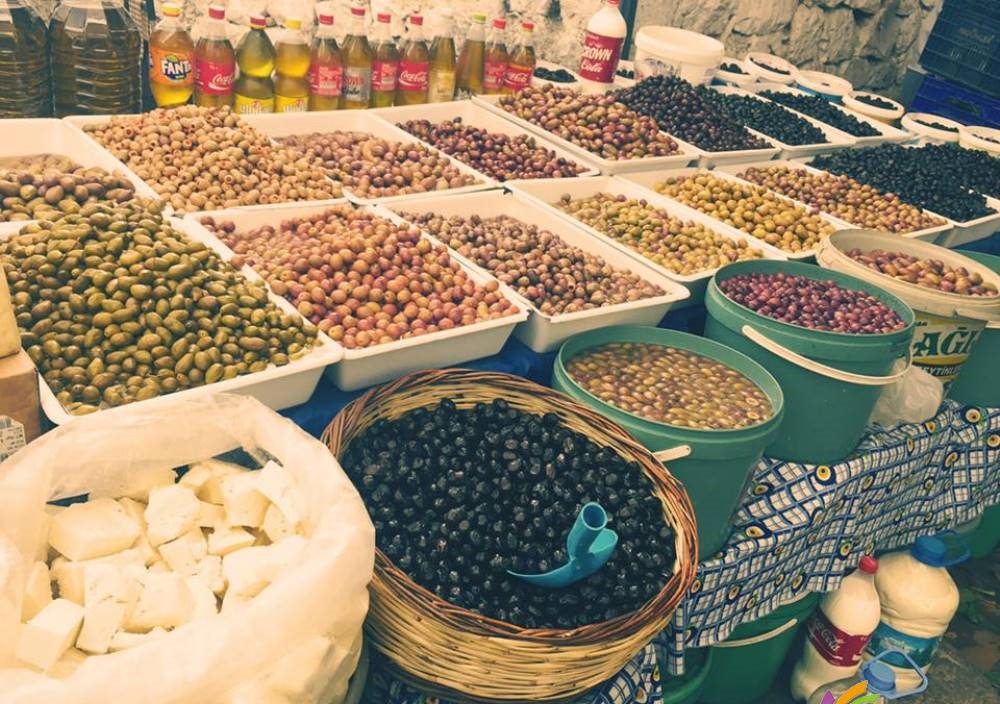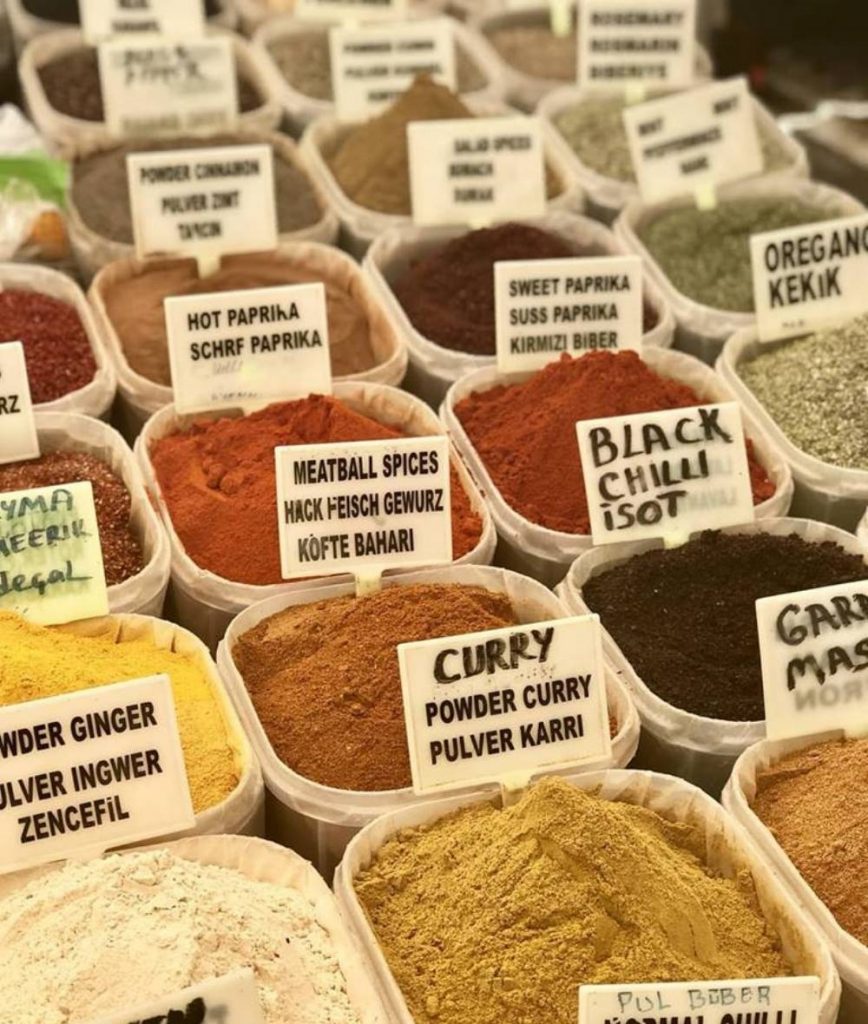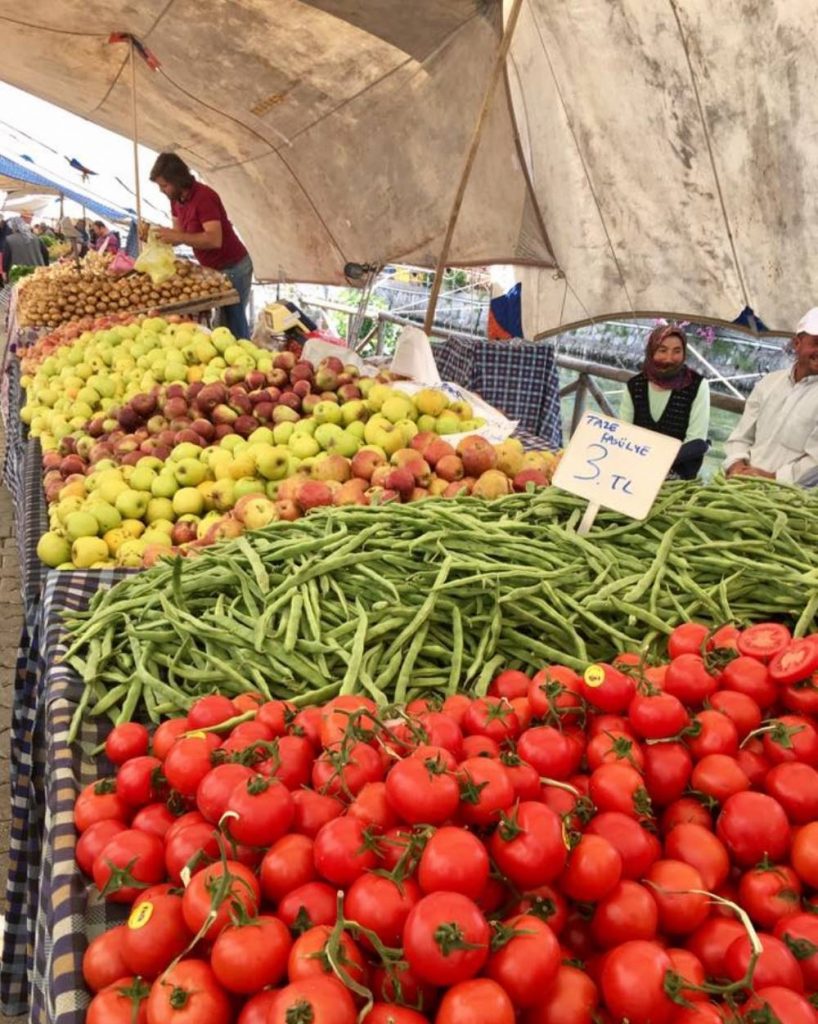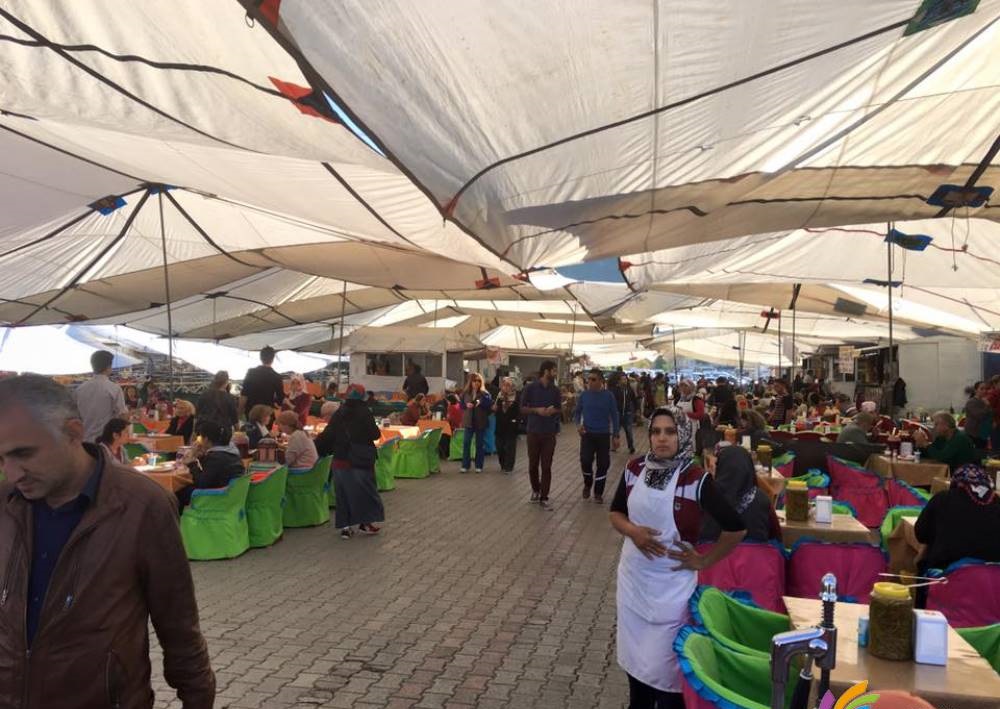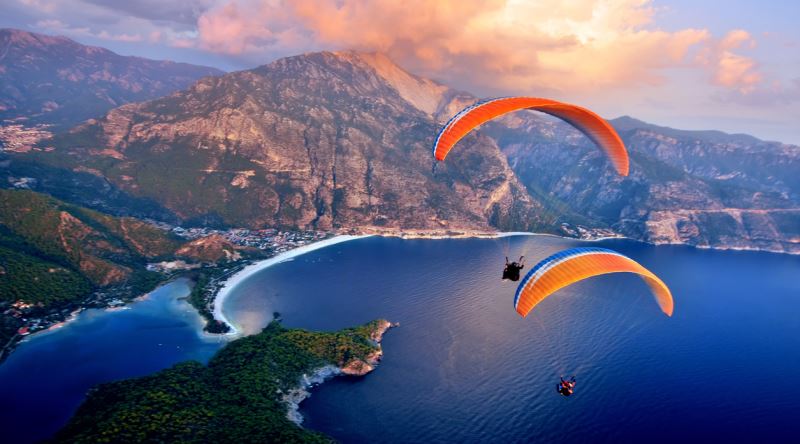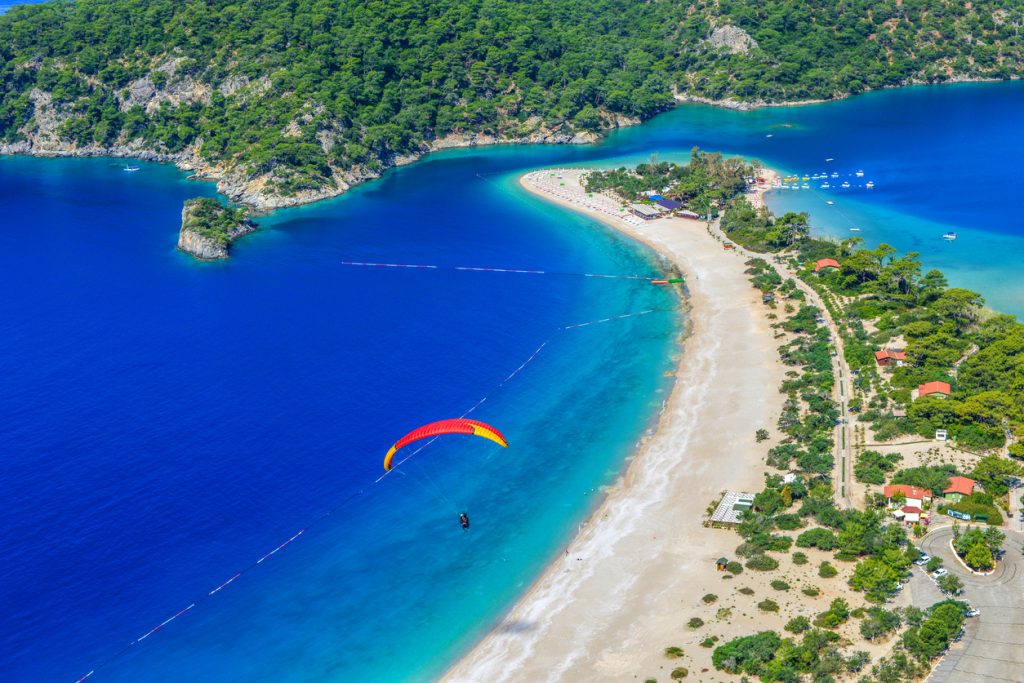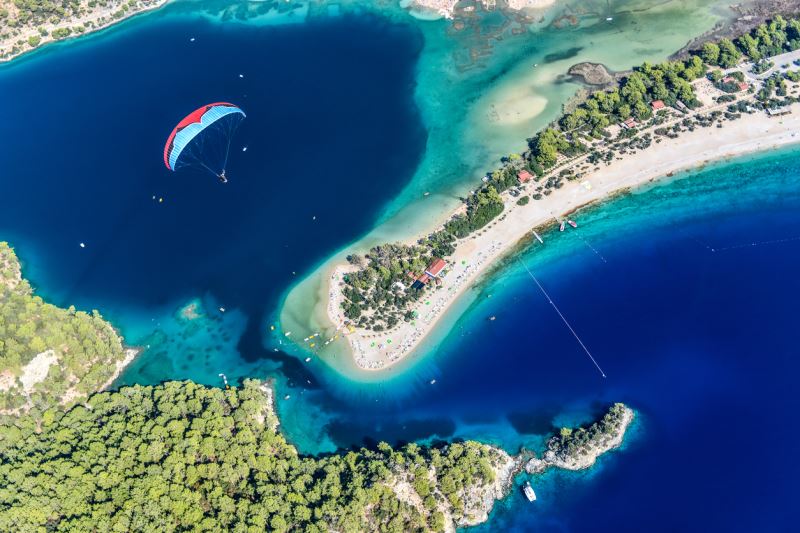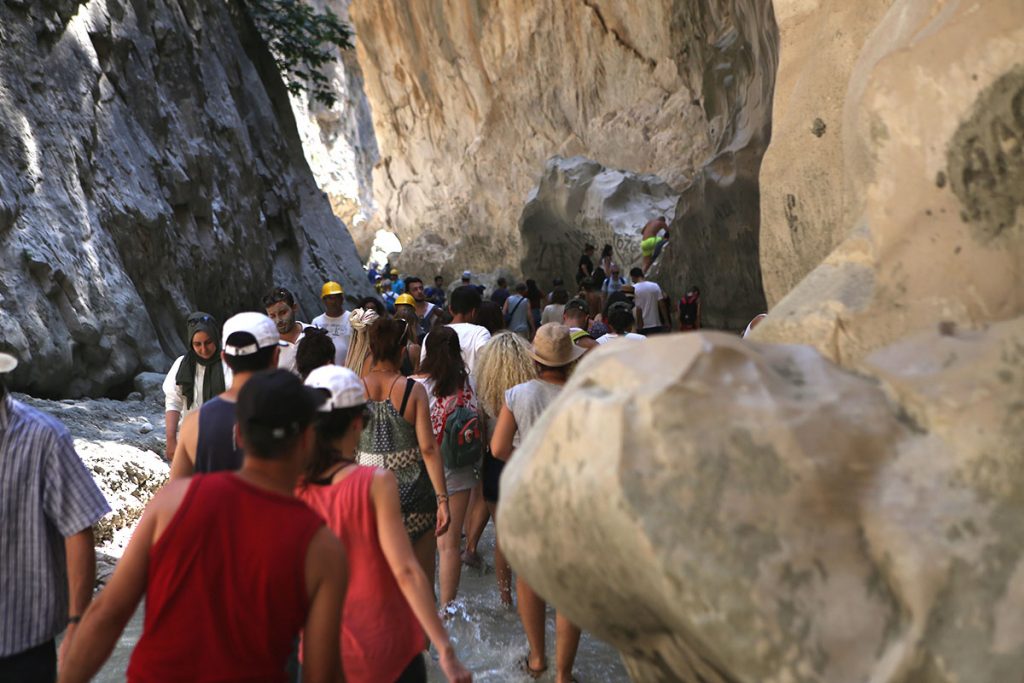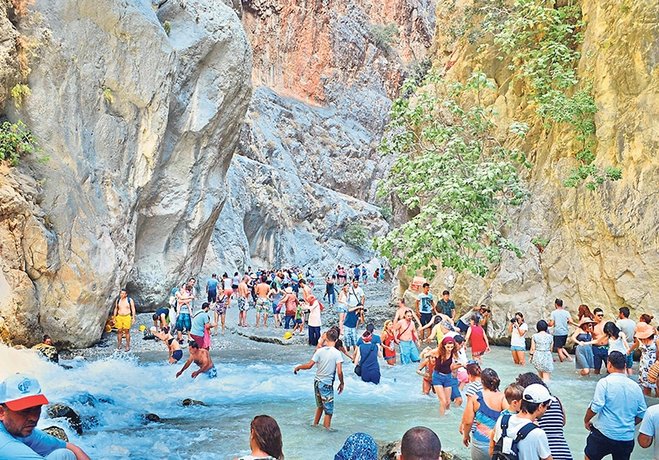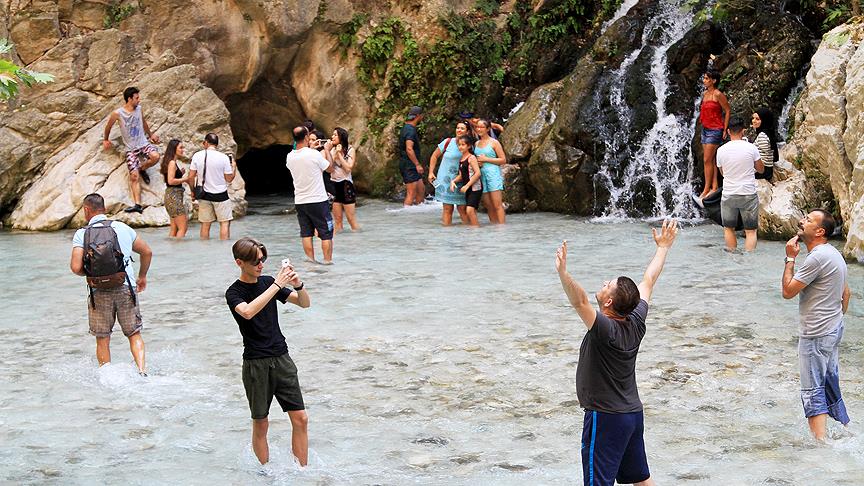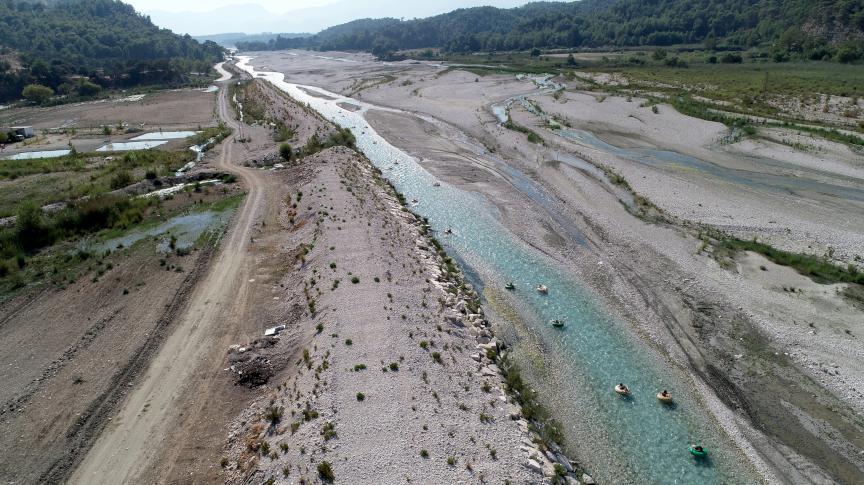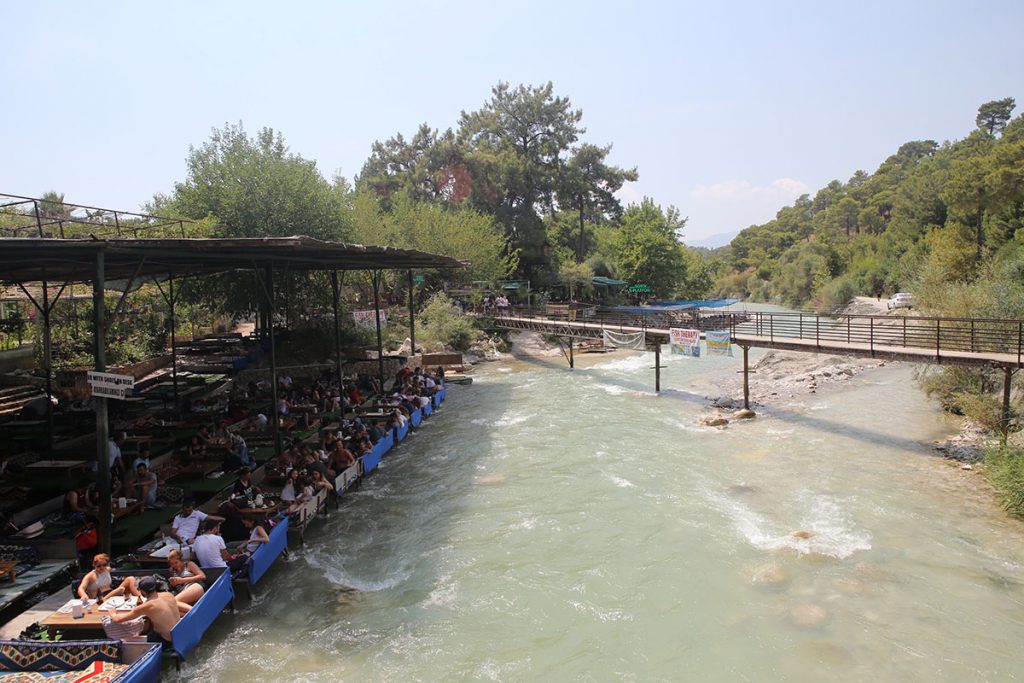Famous as a symbol of Oludeniz and all of Turkey, the Blue Lagoon draws crowds of visitors each year to its scenic shores. Oludeniz, the meaning of the word is Dead Sea, due to its calm waters even during storms; the official translation name is Blue Lagoon, one of the most photographed beaches on the Mediterranean making Oludeniz one of the most famous resorts in the Turkish Riviera. The beach is an official Blue Flag one with the seawater famous for its shades of turquoise, in other words where green meets the blue. Oludeniz beach was voted the best beach in the world in 2006 with 82 percent of the votes.
Situated at the foothill of Babadağ, a 1,975 meter high (6,480ft) mountain nominated for preservation as world heritage, a wide-strip sand beach at a bay on the Turkish Rivieraprotrudes from the valley. In the form of a narrow canyon stretching over around 3–4km (1.9–2.5mi), the valley’s steep walls are 350–400m (1,150–1,310ft) high. A trail in the valley leads to two small waterfalls dropping from 60m (200ft) all the year around. In the middle of the valley, a creek runs, carrying water from a spring in nearby Faralya village to the sea. The valley, rich in flora and fauna, takes its name from more than 80 species of butterfly found here. Butterfies of many varieties in a wide range of colors can be observed in the valley between June and September.
Anciently known as Levissi is a village 8 km south of Fethiye was actually a city of Lycia in the ancient times. Later, Anatolian Greeks lived there until approximately 1922. The ghost town, now preserved as a museum village, consists of hundreds of rundown but still mostly standing Greek-style houses and churches which cover a small mountainside and serve as a stopping place for tourists visiting Ölüdeniz.
Its population in 1900 was about 2,000, almost all Greek Christians; however, it is now empty except for tour groups and roadside vendors selling handmade goods. However, there is a selection of houses which have been restored, and are currently occupied.
Today Kayaköy village serves as a museum and is a historical monument. Around 500 houses remain as ruins and are under the protection of the Turkish government, including two Greek Orthodox Churches, which remain the most important sites of the ghost town. There is a private museum on the history of the town. In the middle of the village stands a fountain that dates from the seventeenth century. Kayaköy was adopted by the UNESCO as a World Friendship and Peace Village.
Shaded tables with plastic cloths offer ‘gozleme’ with ‘ayran’… vegetable sellers water their colourful wares to keep them fresh, village women crouch around their panniers of dried fruits, olives and herbs. Fruits, vegetables, spices, herbs, cereals, jams, raw materials, clothing and even more goods attracts people for shopping not just from the neighborhood, but probably from all around Lycian Coast. The Tuesday Market in Fethiye has become an actual tourist attraction over the years with lots of goods to offer. The market they say; is where one gets value for money.
Fethiye fish market; one of the town’s most famous tourist attractions, a popular night out, a lunching spot for lots of locals, and also one of the best places for doing food shopping too. Buy fresh fish, take them to a restaurant to have them cook it and enjoy while listening to local fasıl (gypsy music). Look, buy and eat fresh fish, it is that easy.
